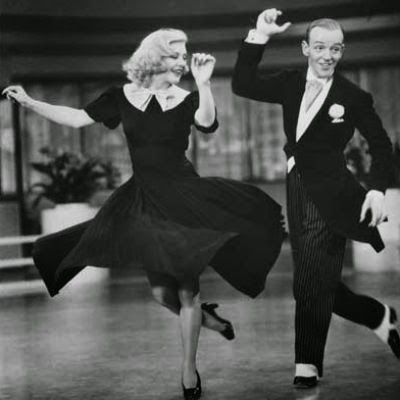Title: Boogie Woogie Bugle Boy of Company B
Writers: Don Raye & Hughie Prince
Performed by: The Andrew Sisters (Movie: Buck Privates)
Original Song: https://www.youtube.com/watch?v=qafnJ6mRbgk
Cover: https://www.youtube.com/watch?v=yfYnxL5dEqA
Presenter: Sophie Ruder
Writers: Don Raye & Hughie Prince
Performed by: The Andrew Sisters (Movie: Buck Privates)
Original Song: https://www.youtube.com/watch?v=qafnJ6mRbgk
Cover: https://www.youtube.com/watch?v=yfYnxL5dEqA
 |
| The Andrew Sisters |
 |
| Song was performed in the movie, Buck Privates |
Presenter: Sophie Ruder
Boogie Woogie Bugle boy was written
by Don Raye and Hughie Prince, in early 1941, about a year before the United
States became involved in World War 2. This song was originally performed by
the Andrews Sisters in a film called “Buck Privates”. There is a very bluesy
rhythm and vibe. It became popular in this movie because it was a song that
made people feel good. The rhythm of the music made you want to get up and
dance, and that’s exactly what people did. The harmonies sung by the three
sisters were mesmerizing. The lyrics were about a famous street musician who
was drafted into the army during the peacetime draft. The army gave him the job of blowing the wake
up call, but the musician felt sad about his job. The army decided to recruit
various musicians to make a sort of “band” to play the wake up call with him.
The lyrics say, “He can’t blow a note if the bass and guitar isn’t with him”
which shows how much his music really means to him. This song was intended to
make people feel good, because of the way it flows. It’s a very upbeat song and
in the movie scene where the sisters are singing it, everyone is up and
dancing, and that’s the way the song was made to make people feel. There have
been many covers of the song in today’s culture; Katy Perry, Keri Hilson and
Jennifer Nettles covered the song in 2010.
Sources:
Contextualizer: Madeleine Ratter
The song Boogie Woogie Bugle Boy
did stick to the trends of the 1940s. Jazz and swing music were all popular
genres of the time and the song fits this type of music with its upbeat sound
and use brass instruments. Another trend of the time was patriotic music. For
years, songs about the United States were popular across the country and ones
that got peoples attention. During WW1, a song called “Over There”, written by
George M. Cohan, was the song that became ionic during the time of the war. This
song was a form of propaganda and encouraged young men to join the war. People
wanted another song that represented the war once WW2 started and Boogie Woogie
Bugle Boy served a similar function as “Over There”. The message of the song
was that the US army was welcoming to all people and anyone who joined could
serve a purpose and help out with the war. This song showed musicians that even
they could join the army and help by doing the things that they knew how to do.
This too was a form of propaganda that boosted the moral of the American people
and helped support the war effort. This song tells us that people at the time
liked US popular culture that was patriotic and made them happy. Even though
war is not a happy topic, the upbeat music and the joyful effect that the song
had on people was something that was appealing.
Sources:
http://en.wikipedia.org/wiki/Boogie_Woogie_Bugle_Boy
http://www.americainwwii.com/articles/boogie-woogie-bounce/
Connector: Moulika Baireddy
As mentioned before, the “Boogie Woogie Bugle Boy of Company
B” was a song produced and popularized in 1941, the year before the United
States officially entered World War II. This was around the time when US
initiated a peacetime draft to expand the armed forces. The Selective Training
and Service Act of 1940 was officially established in September 1940 by
Franklin D. Roosevelt. This act subjected men, aged 21 to 36, to be selected
for military service regardless of their profession or experience. This relates
to the song seeing that it was about a famous street musician who was drafted
to be in the war. This song presents the war in a positive light, in almost a
pro-war attitude. It shows that men, regardless of their skill set, could be
useful in the war effort. This song even had a recent cover, with Katy Perry,
Keri Hilson, and Jennifer Nettles on VH1 Divas in order to salute the troops. My
question for the class related to the cover song: “This new cover song, still
had the same jazz music and the same lyrics as the original. Do you think this
song has the same effect on the audience now as it did then? Why or why not?”
Some key points that the class brought up was that the lyrics, though not
applicable to the present time (war is not dominating everyone’s life right
now), the song itself is still timeless and influential, just like other songs
that we talked about. My answer was pretty similar: “Though the lyrics might
not directly correlate to the situation of present times, the song with its
upbeat lyrics and patriotic theme, still initiate a feeling of pride and
loyalty to the audience. Just like God Bless America and Yankee Doodle, this is
another patriotic tune.”
Sources:
Selective Service Acts: http://www.britannica.com/EBchecked/topic/1527673/Selective-Service-Acts#ref1077949
Youtube link for cover song: https://www.youtube.com/watch?v=yfYnxL5dEqA
General Background: http://en.wikipedia.org/wiki/Boogie_Woogie_Bugle_Boy


